L.A. Noire – Review
by Mark R
|
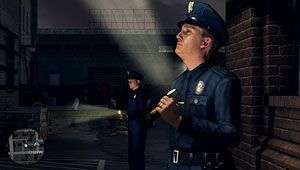 Think of any game under the Rockstar banner and you’ll invariably come up with a title where the protagonist is, to all intents and purposes, what would typically be viewed as an antagonist – the stereotypical troubled past, a renegade on the wrong side of the law, a hoodlum and all manner of other negative archetypes. It is, however, important to point out while the Rockstar catalogue certainly leans heavily towards this direction, it is not exclusive to the anti-hero and it is more a common misconception that they only produce controversial titles.
Think of any game under the Rockstar banner and you’ll invariably come up with a title where the protagonist is, to all intents and purposes, what would typically be viewed as an antagonist – the stereotypical troubled past, a renegade on the wrong side of the law, a hoodlum and all manner of other negative archetypes. It is, however, important to point out while the Rockstar catalogue certainly leans heavily towards this direction, it is not exclusive to the anti-hero and it is more a common misconception that they only produce controversial titles.
Their recent affiliation with Team Bondi, however, has subverted that which we’ve come to know of Rockstar and places us in the presumably highly polished shoes of one Cole Phelps of the LAPD – a young officer with his eye on furthering his career in law enforcement and a keen sense of what is right and wrong. Through a series of flashbacks at various stages of his advancement through the LAPD, we’re shown his career in the US Marine Corps throughout which it quickly emerges that his past may not necessarily be as clean cut as we’d been led to believe. This, coupled with his apparent squeaky clean present day character, makes for an interesting contrast.
There are few games which, in my experience, have the ability to draw you in as quickly and effectively as L.A. Noire. From the first few seconds of the menu screen, the senses are treated to a journey back in time where brushes delicately caress the snare while staccato basslines and muted trumpets punctuate the silence on a backdrop of melancholy rainfall. This, supported by the familiar image of a dark alley floored by wet cobbles and lit only by a lone car’s headlights, serves to set the scene beyond any other introduction to a game.
This, is 1940s Los Angeles.
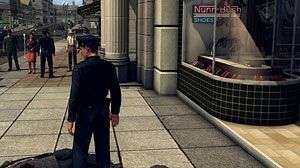 Everything you’d expect to see from the classic era is perfectly represented in glorious detail, from the dominating “HOLLYWOODLAND” lettering keeping a watchful eye over the city from its hillside position to the clanging bells of the trams as they shuffle along the streets. Even the colour palette is indicative of the 40s with the near-pastel colours daubing exterior walls, and sparsely decorated product packaging in every storefront remind us that we’re experiencing a country that was, at the time, still wriggling free from the fallout of the Great Depression.
Everything you’d expect to see from the classic era is perfectly represented in glorious detail, from the dominating “HOLLYWOODLAND” lettering keeping a watchful eye over the city from its hillside position to the clanging bells of the trams as they shuffle along the streets. Even the colour palette is indicative of the 40s with the near-pastel colours daubing exterior walls, and sparsely decorated product packaging in every storefront remind us that we’re experiencing a country that was, at the time, still wriggling free from the fallout of the Great Depression.
The attention to environmental detail is complemented by the one aspect of L.A. Noire that not only had the entire gaming industry’s tongues wagging, but those of the mainstream media – the realism in the characters’ faces. As soon as those first scenes were released, with the “Actual gameplay footage” caption displayed proudly along the bottom, the heart of this graphic whore skipped several beats. It was the sort of realism that had only previously been available in cut scenes yet this new game was going to be able to handle it in real time, and experiencing the gameplay first hand at PAX East earlier in the year only served to reinforce this, raising my overall anticipation.
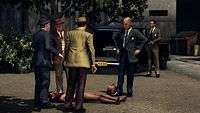 |
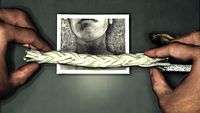 |
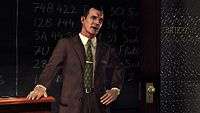 |
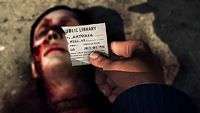 |
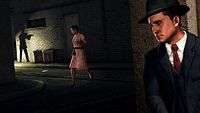 |
 |
The realism when first thrown into post-war L.A. is impressive, and there’s no denying it, but it didn’t take long for the gold plating to wear off and the tarnished aluminium to show through the initial glamour. While the presentation at PAX consisted of actual gameplay, it was a very different experience when you are no longer watching someone else play but are holding the controller in your own hands. What looked to be a game driven by intuition and instinct actually ended up being almost the exact opposite, where the player adopted more of a spectator’s role until such times as they were asked to make decisions. It is at this point where I should take a slight sidestep and explain something very important, which seems to have been overlooked by many people, including myself…
L.A. Noire is two entirely different games in one.
The factory defaults are, in my opinion, flawed and that almost resulted in this review being mostly negative. The game itself starts in much the same way as most others would, with a considerable amount of hand-holding to bring the player up to speed with how everything works, getting used to how each of the clue types work and the interrogation process. When approaching an area with a clue, the Xbox controller would rumble and an audio cue of a quick piano flutter would play to indicate that there may be something more to the objects, although this isn’t necessarily the case. When an item is of particular interest, the inspection process includes additional controller rumblings to let you know that you’re examining the evidence in the correct manner and that it requires closer scrutiny, coupled with on-screen instructions, so holding the position with the vibration allows the camera to focus on the aspect of the item that produces the most information to help the case.
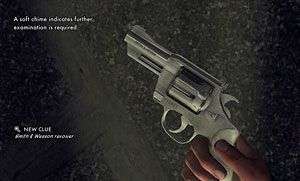 Similarly, manipulating a piece of potential evidence which may need a more in depth examination, such as opening a locket or turning over a leaflet to read the back, produces the same visual and aural guides, prompting a quick press of the “A” button to continue with the inspection. During any chase sequences, getting close enough to the suspect will result in an on-screen prompt urging you to tap the “A” button to attempt to tackle them. It’s what we expect of games these days and so, naturally, there was nothing that immediately jumped out and jarred in any way during this process.
Similarly, manipulating a piece of potential evidence which may need a more in depth examination, such as opening a locket or turning over a leaflet to read the back, produces the same visual and aural guides, prompting a quick press of the “A” button to continue with the inspection. During any chase sequences, getting close enough to the suspect will result in an on-screen prompt urging you to tap the “A” button to attempt to tackle them. It’s what we expect of games these days and so, naturally, there was nothing that immediately jumped out and jarred in any way during this process.
By the time the third case from the traffic desk comes along, one would expect that these cues would at least become more infrequent if not disappear altogether, yet it wasn’t until all homicide cases had been solved that I found myself dejectedly wandering through menus wondering whether I could actually bring myself to complete the game that I noticed something. Something of the utmost importance: the “Gameplay” options within the menu not only allowed for the controller rumbling hints to be switched off, but also the audio cues and the option to skip specific sequences.
Moments later, after finding out that it was possible to play entirely in black and white, my real journey into L.A. Noire began and this, as I touched on earlier, is when I realised that there were two separate games. Graphically, the monochrome option excels beyond that of the colour version and, at times, I found the full colour version to be far too unrealistic considering how much effort had gone in to the character models. Skin tones were a little too vibrant in places, and the faces in certain night scenes had the appearance of being illuminated from within as though the heads were a fibreglass shell with a candle gently glowing inside. In the traditional black and white mode, however, everything fell into place. Shadows became more realistic, the global illumination techniques actually became more apparent, ironically, and the immersion… well… now we truly were in 1940s Los Angeles.
The intuition-driven game promised by Rockstar at PAX East back in March was exactly what I had before me, and the first case for the vice desk was no longer shoe-horned into being a rather saccharine affair where every movement was more or less spoon fed to the point where the player wasn’t much more than a spectator within a mildly interactive movie. Clues had to be discovered by wandering around crime scenes and actually seeking out objects of interest whereas the previous colouring made it very easy to spot objects that could be interacted with, whether the controller rumbled or not. This was no longer an issue as the screen was awash with nothing but stark blacks, bright whites and enough shades of grey to give John Major a general erection.
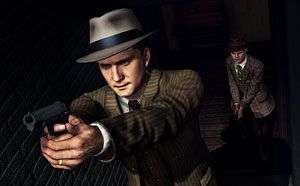 With less frustration at hand, and fewer distractions from prompts, L.A. Noire became a joy to play and character performances leapt off the screen. The voice acting is superb and not only is the dialogue perfectly representative of the era, but it is also very engaging and, for the first time in my entire thirty-odd years of gaming, I watched and absorbed every cut scene. Aaron Staton’s portrayal of Cole Phelps was, I thought, perfectly executed even though I’ve heard many say otherwise and Keith Szarabajka was particularly good as his partner from the arson desk, Herschel Biggs.
With less frustration at hand, and fewer distractions from prompts, L.A. Noire became a joy to play and character performances leapt off the screen. The voice acting is superb and not only is the dialogue perfectly representative of the era, but it is also very engaging and, for the first time in my entire thirty-odd years of gaming, I watched and absorbed every cut scene. Aaron Staton’s portrayal of Cole Phelps was, I thought, perfectly executed even though I’ve heard many say otherwise and Keith Szarabajka was particularly good as his partner from the arson desk, Herschel Biggs.
What I found particularly impressive about L.A. Noire was its ability to convey a time when being a police officer was less about following the letter of the law and more about getting the job done. With the current political climate being one where the average thirteen year old idiot can get away with setting fire to a car and have officers shrug it off for fear of repercussion, being transported back to when the police still brought fear to criminals and were willing to go that little bit further to see that justice was done, even if it meant ‘roughing them up’ in the holding cells, was a welcome escape. As you’d expect, however, with such a brazen approach to justice comes a more sinister side of the law with threads of corruption woven throughout various departments and the wider political arena.
It is this corruption that Phelps is ultimately battling in his attempt to make good on prior mistakes, and this arc makes for a much more engaging storyline than had they gone with a series of unrelated cases. Ultimately, the storyline serves as a metaphor for how doing what is right isn’t necessarily what is just, and vice versa. The choices made my Phelps in his journey, whilst outwith our control as the player, are both interesting and thought provoking but not to the point where you’ll necessarily find yourself relating to the character but they will, nonetheless, strike a chord with most as he tackles the highs and lows of life as an LAPD detective.
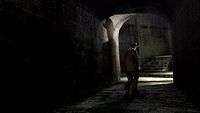 |
 |
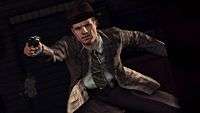 |
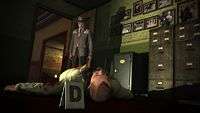 |
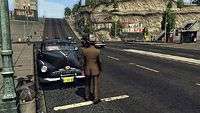 |
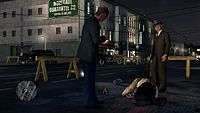 |
In order to progress through the ranks, Phelps must solve a series of cases by performing the necessary detective work to gather clues, interview persons of interest at the scene such as witnesses or coroners, interrogate suspects and, ultimately, make an arrest. Picking up clues is, as mentioned before, a case of listening to the details of the initial report, speaking with any experts on the scene and investigating the crime scene for any potential leads. There will likely never be any point where you simply can’t find all of the necessary clues for a particular area but, should you find yourself at a loss, you have the option to spend an Intuition Point by accessing the obligatory little black book. This will immediately produce a magnifying glass icon for every individual clue remaining on your mini-map, allowing you to make light work of the process.
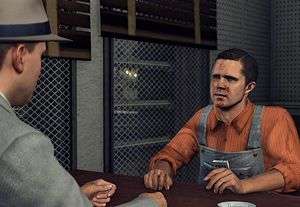 Intuition Points are earned by reaching a new level which is, as you’d expect, prompted by reaching a certain level of XP within each rank, depending on your performance on each case. At any given time, you are permitted a maximum of five Intuition Points so if you haven’t spent any by the time you next level up, you forfeit your point for that level. As part of the review process, I used the option to show all clues once, but never felt the need to use it again. That said, there were several cases where I thought I had uncovered all clues and the statistics at the end of the case said otherwise so, as one who spends hundreds of hours looking for objects in RPGs, it’s obviously quite easy to overlook some objects.
Intuition Points are earned by reaching a new level which is, as you’d expect, prompted by reaching a certain level of XP within each rank, depending on your performance on each case. At any given time, you are permitted a maximum of five Intuition Points so if you haven’t spent any by the time you next level up, you forfeit your point for that level. As part of the review process, I used the option to show all clues once, but never felt the need to use it again. That said, there were several cases where I thought I had uncovered all clues and the statistics at the end of the case said otherwise so, as one who spends hundreds of hours looking for objects in RPGs, it’s obviously quite easy to overlook some objects.
While you’d imagine that missing a clue would immediately create a dead end within your investigation, it wasn’t something that I’d ever come across myself. At no point did the process ever grind to a halt and force me to retrace my steps, which is both good and bad. It clearly makes for a much more fluid gaming experience, but also detracts somewhat from the realism of the situation. While we’re on the subject of realism, I was visibly shocked when Phelps first reached down and picked up a bloodied tyre iron to read the inscription… with his bare hands… clutching the point where any ‘self-respecting’ killer would have been holding it, thereby muddying any prints from the weapon. I understand that it’s going back to 1947 when police forensics extended as far as a sharp drawing of breath through the teeth coupled with a customary “oooooh that’s a nasty gash” but surely they would still have been careful not to tamper with prints? It was one of those features that I found both shocking and humorous at the same time, but I digress.
Perhaps the most touted area of L.A. Noire’s gameplay is the interrogation process. The little black book emerges from the inside pocket as Phelps selects which question to throw at the suspect and it is here that the player’s instinct, and the Intuition Points, really come in to play. The MotionScan technology by Depth Analysis allows for the most minute reactions to be clearly displayed in a perfect fluid motion, much like actual filmed footage, so the tiniest dart of the eye and the slightest nervous swallow at the time of answering are easily distinguishable from a straight forward response.
The key to a good interrogation is to drop yourself into Tim Roth’s shoes and pay attention to these facial nuances, allowing the suspect to betray themselves or confirm their innocence. Pressing “A” accepts that your person of interest is telling the truth, and this is always going to be a pretty safe choice unless there’s even the slightest “tell”, but the choice between doubting the validity of the response and branding them a liar is where things start to get complicated.
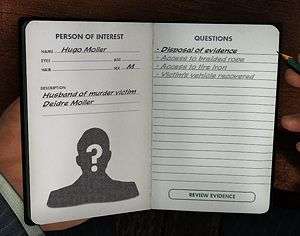 As with reality, anyone who believes in what they are saying is less likely to give much away with their expressions, whether they’re telling the truth or not, and so it’s very easy to assume that a suspect is perhaps not being entirely truthful and so you’d play the “Doubt” card when they are actually attempting to get away with an outright lie. If this happens, your line of questioning can grind to a halt on that score and you won’t get any further information from them, but if you brand them a liar and then can’t produce any evidence to support your claim, you’re in the same boat. In most cases, the difference between a slight fib and an outright ‘Nixon’ is easily discernible but, when you’re faced with a suspect that is making your life difficult, you have the option of using an Intuition Point.
As with reality, anyone who believes in what they are saying is less likely to give much away with their expressions, whether they’re telling the truth or not, and so it’s very easy to assume that a suspect is perhaps not being entirely truthful and so you’d play the “Doubt” card when they are actually attempting to get away with an outright lie. If this happens, your line of questioning can grind to a halt on that score and you won’t get any further information from them, but if you brand them a liar and then can’t produce any evidence to support your claim, you’re in the same boat. In most cases, the difference between a slight fib and an outright ‘Nixon’ is easily discernible but, when you’re faced with a suspect that is making your life difficult, you have the option of using an Intuition Point.
In the interrogation process, the Intuition Points provide you with two options: the first is the “Ask The Community” feature, which is essentially a play on the Who Wants To Be A Millionaire “Ask The Audience” where you’ll be presented with statistics of how the global L.A. Noire community voted when posed with this particular question. It is then up to you to decide whether you believe that the community were right with their decision or ignore them and go with your gut instinct after wasting a valuable point. The second option is another borrowed from WWTBAM whereby one of the “Truth”, “Doubt” and “Lie” options is removed, leaving you with only two choices. Before deciding to use an Intuition Point, however, your little black book displays a helpful statistic letting you see how many other players got the answer correct after spending a point. In most cases that percentage is in the high 90s, however on one particular question I noted that the accuracy was under 6%, and I can understand why, but I’ll not spoil it for you.
While I haven’t yet managed to ruffle enough feathers to completely lock down an entire case, the presentation at PAX did mention that it was possible to have a suspect clam up to the point where it closes down the line of questioning. If this is the case, I’d be interested to see how the game progresses past that point.
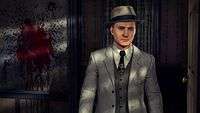 |
 |
 |
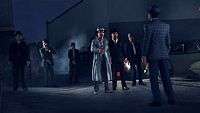 |
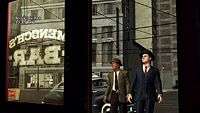 |
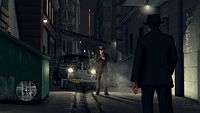 |
Travelling around Los Angeles is achieved by either sticking to your own designated vehicle and navigating the beautifully straight streets, asking your partner to drive to the location (which allows you to either sit back and watch the scenery from various cinematic angles or skip directly to your destination), or commandeering a vehicle from some poor sod on their way to pick up some milk and a Tommy Gun. With so many vehicles to discover throughout the game, I opted to commandeer as many as possible although, in doing that, it meant I no longer had the police siren to help clear traffic or radio dispatch to hear the various street crime announcements.
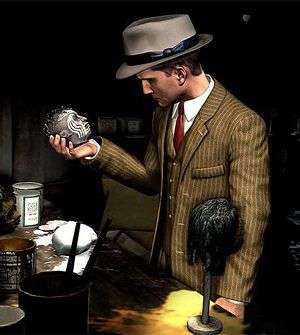 Street crimes are essentially the equivalent of the RPG side quests, earning the player experience through a series of scattered incidents from potential suicides through to full-on bank robbery and hostage scenarios. With most games of this ilk, the side quests are where I take the most pleasure and the main quest would take a back seat as it’s never usually as powerful as I’d like. With L.A. Noire, however, those scales have well and truly tipped as it was the main storyline that captured my attention early on. There’s not a lot that can be said about it without giving everything away, but I found myself enthralled from the point where the last homicide case was closed and the arson desk opened up. The homicide desk is by far the most anticipated facet to the game, helped along by the fact that most gameplay videos and screenshots depict this particular period in Phelps’ career and there were times towards the end of the final homicide case where the adrenalin started to pump, but it was the overall thread of corruption and back story that compelled me enough to the point where I had to play to the end, and beyond the credits.
Street crimes are essentially the equivalent of the RPG side quests, earning the player experience through a series of scattered incidents from potential suicides through to full-on bank robbery and hostage scenarios. With most games of this ilk, the side quests are where I take the most pleasure and the main quest would take a back seat as it’s never usually as powerful as I’d like. With L.A. Noire, however, those scales have well and truly tipped as it was the main storyline that captured my attention early on. There’s not a lot that can be said about it without giving everything away, but I found myself enthralled from the point where the last homicide case was closed and the arson desk opened up. The homicide desk is by far the most anticipated facet to the game, helped along by the fact that most gameplay videos and screenshots depict this particular period in Phelps’ career and there were times towards the end of the final homicide case where the adrenalin started to pump, but it was the overall thread of corruption and back story that compelled me enough to the point where I had to play to the end, and beyond the credits.
The soundtrack is outstanding. From classics by the likes of Billie Holiday, Ella Fitzgerald and Louis Armstrong, through to beautifully orchestrated original tracks by The Real Tuesday Weld, featuring Claudia Brücken – the voice of Elsa Lichtmann – on vocals, everything about the soundtrack is perfect, including Andrew Hale’s atmospheric score. At certain points of the game, the cascading rumble of timpani coupled with the swellings of muted trumpets accent specific instances in a manner reminiscent of the classic detective movies that the game so perfectly emulates. There are few commercially licensed soundtracks that will grab my attention, but L.A. Noire is one.
 The vocal recordings are also beyond those I’ve come to expect from a game. All too often we’re subjected to audible differences from one character to the next where it’s clear that the dialogue has either been recorded in separate locations or, at the very least, different times. Even with studio monitor headphones, the balance and levels are consistent throughout except on occasions where someone may be shouting from the opposite end of an alley and it actually sounds as though it has been recorded outside rather than processed in a studio. I can’t speak highly enough of the sound recording on this game.
The vocal recordings are also beyond those I’ve come to expect from a game. All too often we’re subjected to audible differences from one character to the next where it’s clear that the dialogue has either been recorded in separate locations or, at the very least, different times. Even with studio monitor headphones, the balance and levels are consistent throughout except on occasions where someone may be shouting from the opposite end of an alley and it actually sounds as though it has been recorded outside rather than processed in a studio. I can’t speak highly enough of the sound recording on this game.
The graphics are, as I’ve said before, quite exquisite… but only under the right conditions. In full colour mode, the saturation can be somewhat jarring and the odd Floyd Steinberg style dithering along the fringes of shadows can be distracting at times, at least on the Xbox 360, but the black and white option is where it comes into its own. The MotionScan technique used for the facial animations is certainly groundbreaking, and will hopefully be carried through to many games hereafter, but I often felt that either the faces were too good or the body meshes just weren’t good enough. While it never affected me enough to want to stop playing, it was disappointing that so much effort had gone in to the head meshes with considerably less attention being paid elsewhere, but I imagine that’s down to the processing limitations of the current console generation.
Overall, after getting past the hurdle of hating the ridiculous spoon-feeding before realising that it could be turned off, this was a thoroughly enjoyable game. It sits astride the fence where it ended up being much better than I expected it to be, but not quite as good as I’d hoped it would – which tends to be the case with every game, so it’s by no means a slight against L.A. Noire itself. That said, regardless of how many achievements need to be picked up, or how many vehicles still remain unlocked, I will certainly be playing this through again because I want to… in black and white with all clues and options to skip turned off.
Pros- Fantastic use of groundbreaking technology
- Superb voice acting
- Excellent soundtrack and score
- Beautifully woven story arc
- Very immersive in black and white mode
- Interesting departure from the norm
- On screen prompts remain beyond tutorial stage and could easily be seen as being patronising
- More on-rails than initially led to believe
- Would be a much better game from the outset if the default settings were changed
- Not enough detail in body meshes clashes with head detail
There are, as mentioned before, two games within L.A. Noire. The first has that soul destroying led-by-the-hand style that I first saw in Fable 2, negating any need for the player to be involved at all. This was reminiscent of the old arcade laser disc game "Dragon's Lair" where everything played out around you until you needed to push a button, albeit to a lesser extreme with L.A. Noire. The other game is, quite frankly, a fantastic breath of fresh air and is night and day compared with the first.
The problem is that the game's default settings throw the player into the first game and, unless they delve into the options menu or have read the manual (assuming it's discussed in the manual, as review copies rarely have manuals), you could actually find yourself completing the game without ever knowing about the option to switch off clue hints. While this may seem absurd, almost everyone I've mentioned it to was unaware of the option to go without visual and aural cues.
Between the back story of Cole Phelps, his ascension through the ranks of the LAPD and his dealings with corruption throughout the main story arc, L.A. Noire is a fantastic game when played properly. Visually stunning in black and white, with a fantastic immersive score, stellar characterisation and believable dialogue, this trip back to the 1940s when Hollywood was more than implants and liposuction is well worth playing and certainly delivers the goods.
It is important to point out, however, that this would have been a very different review had it not been for the ability to switch off the clue hints and audio cues.
Last five articles by Mark R
- From Acorns to Fish
- Alone In The Dark
- Why Borderlands is Better Than Borderlands 2
- Falling Short
- The Division: A Guide to Surviving the Dark Zone Solo















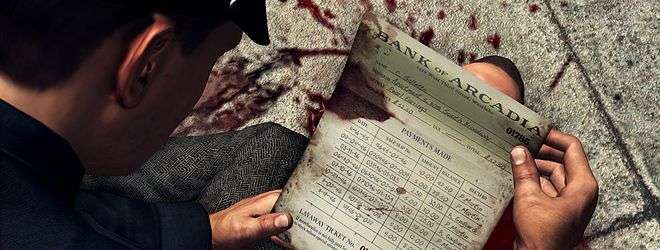
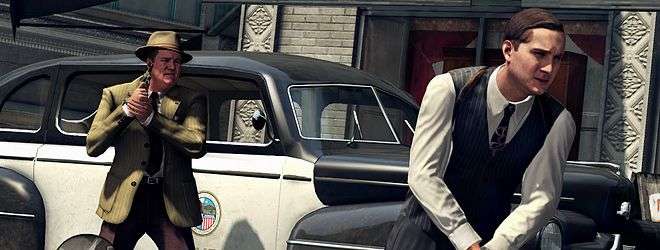
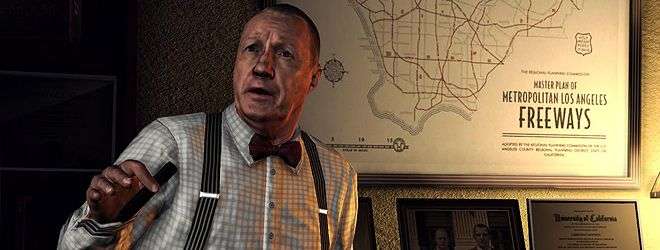
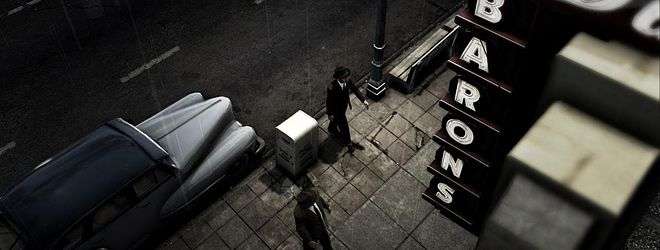






Good review, Mark. I won’t be dabbling with this for the foreseeable though but I’ll eventually give it a go just to see if the face stuff is as good as you say.
I was always more Skool Daze than Contact Sam Cruise anyway.
If I had 5% of your writing talent I would be a happy man…
Great review and I think one of the only ones i have seen that brings up the same issues I have with the game. I think i brought it up on the forums about the bodies not being realistic enough to compete with the faces…got laughed at, but still!
I find the movement horrendous, the gun play utterly terrible and the game is pretty buggy / glitchy (on the 360 at least).
Saying that, I have enjoyed the storyline and most of the cases (although Vice missions get pretty boring for me…). So would be happy to see a follow up.
Sounds like I’m going to have to play this with the black and white on and the hints turned off (though I normally always go to the menu with these sorts of games and turn the hints off so they don’t annoy me) in order to really appreciate it, but I’m going to love this game when I finally get a go on it.
Absolutely fantastic work, Chief!
Top review Mark. Judging from what you’ve said on the whole lead by the hand nature of the game, I’ll be turning them off, from the onset and relying on my sleuth skills to progress in the game.
There are definitely two different games in LA Noire, and not just the disparity in the experiences between playing with the hints and monochrome on or off (though I absolutely agree with you about how much that impacts on the authenticity and enjoyment of the pulp detective story experience). The first two discs are tightly scripted, well thought out, and contain some of the best story driven gaming I’ve played for some time. The over-arcing storyline about Cole Phelps’ wartime past feels kind of vague and distracting from what’s happening at the time in the game, but each case is like a really good cop show, and entirely enjoyable taken individually. The problem is that the third disc isn’t as good. The end of the game falls rather flat for me, it’s not as tight, the story telling becomes lazier and less homage and more cliché. Individual cases start to blend into each other and it’s not as satisfying. It’s a shame, the ending kind of ruined it for me, when initially it’s just such an awesome game.
I also can’t get over thinking that Phelps is a dick, but it kind of works for him and grew on me.
I’m really in two minds about this game. I love it and I hate it, equally, in different parts. What I am certain about though, is how much I enjoyed your review dood.
I’m still really enjoying it without the hints and in full colour, but I guess I’m playing it as more of a Heavy Rain style game, focusing on the narrative rather than the actual gameplay. I’m treating it more like a police procedural TV show than my own detective game. I’d still like to try it out with the hints off, but I’m too worried about screwing up the cases (every time I get three stars or less my heart sinks and my girlfriend shakes her head in shame).
Enjoyed the review though, glad to see you stuck with it
Great Review Mark! Glad you got it done in time too